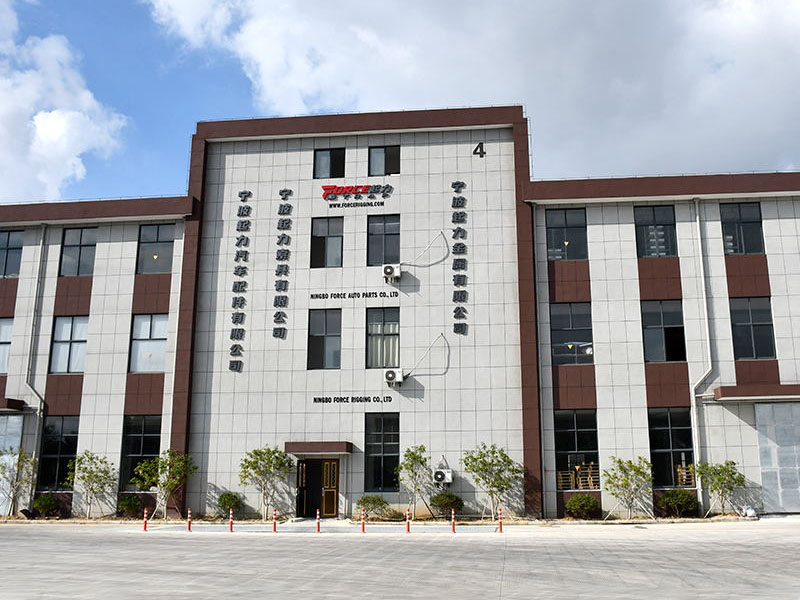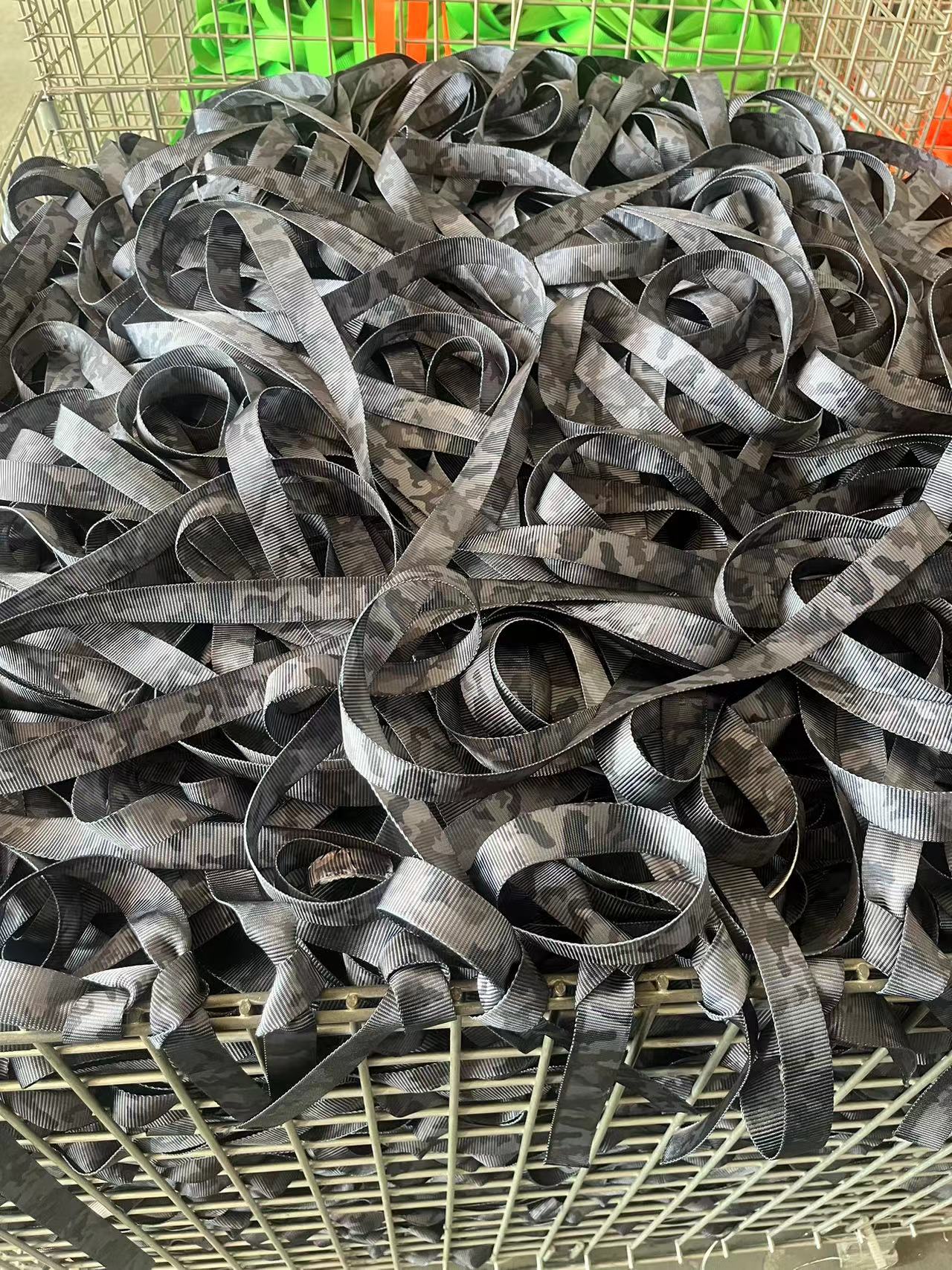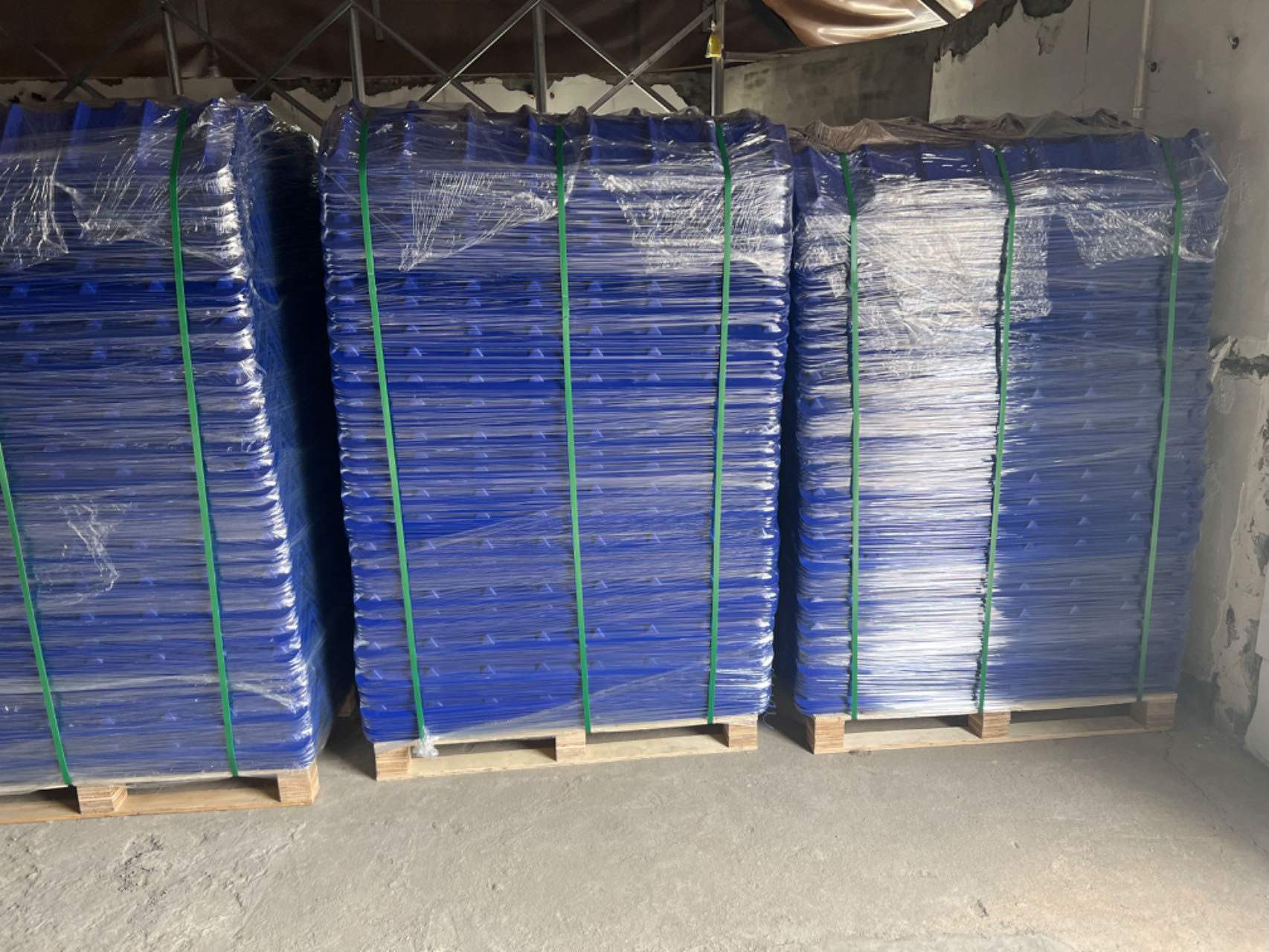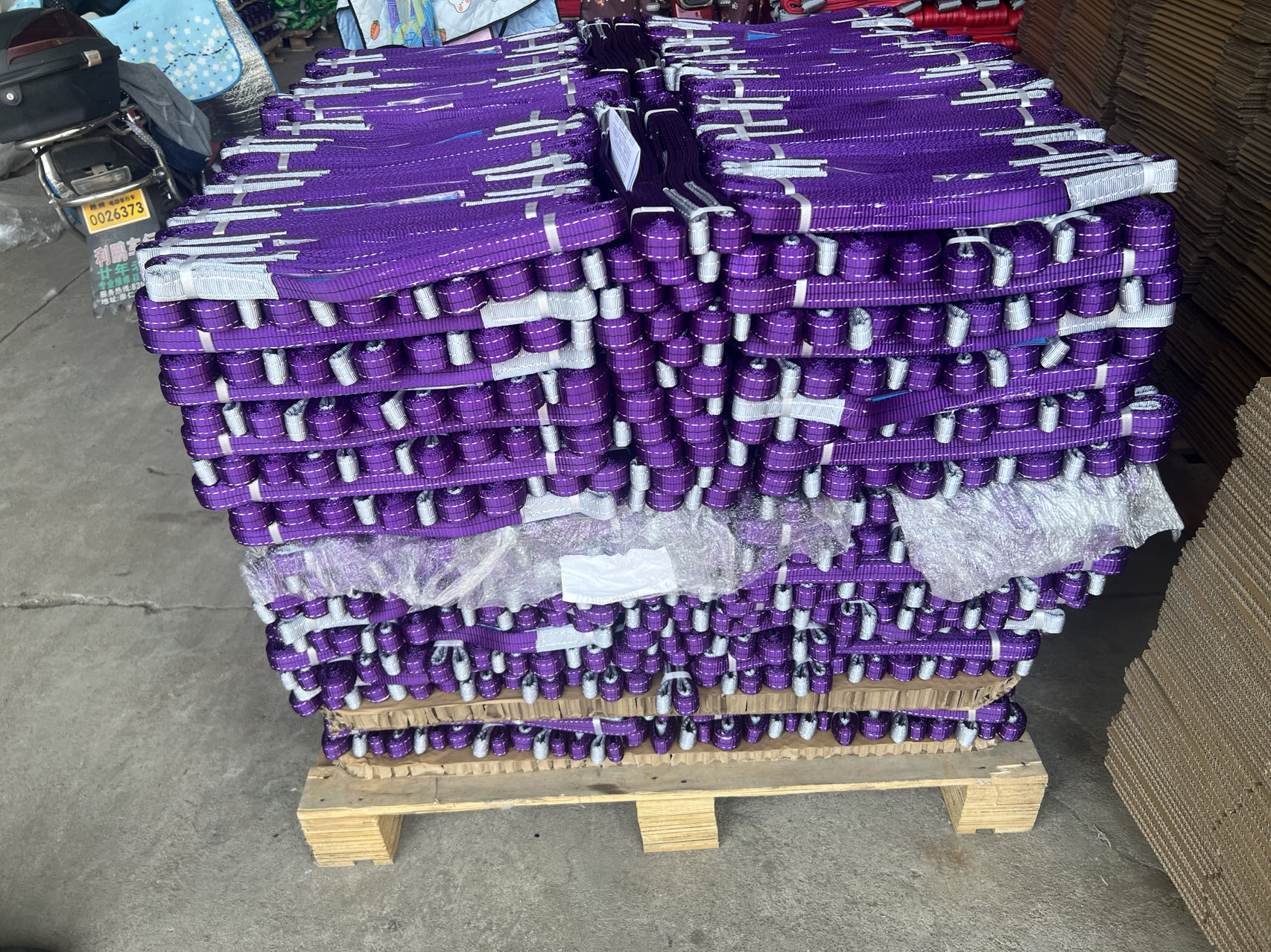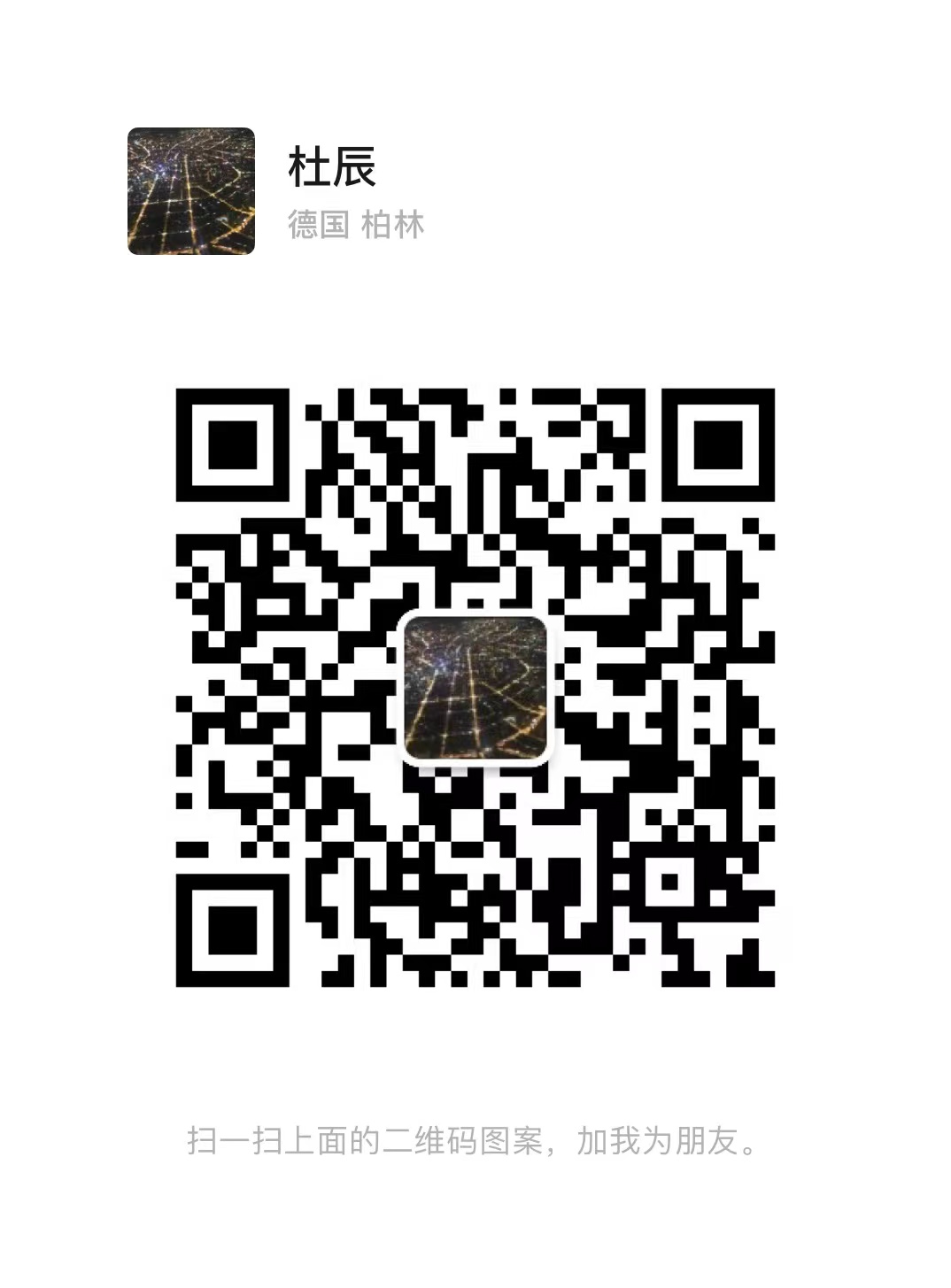Fecha:22 de mayo de 2025
Por:Joe, ingeniero principal en Force, su socio directo de fábrica para soluciones industriales de amarre
Como gerente de compras, somos conscientes de que su decisión de seleccionar unSling de levantamientoPara su proyecto es una consideración constante de seguridad, eficiencia y costo. Es por eso que en la fuerza de la fuerza, a menudo escuchamos preguntas como: "¿Cuál es la diferencia entre una honda redonda y una eslinga plana?" O "¿Qué honda es mejor para mi proyecto?" Basado en nuestros 15 años de experiencia en la fabricación, hemos creado esta guía para ayudarlo a tomar una decisión informada. Compararemos las eslingas redondas y planas y compartiremos ejemplos de la vida real con consejos prácticos para maximizar la seguridad y el rendimiento. Además, analizaremos en profundidad cómo probamos rigurosamente nuestras hondas para garantizar que cumplan con los estándares globales como CE, GS, ISO 9001 y WSTDA.
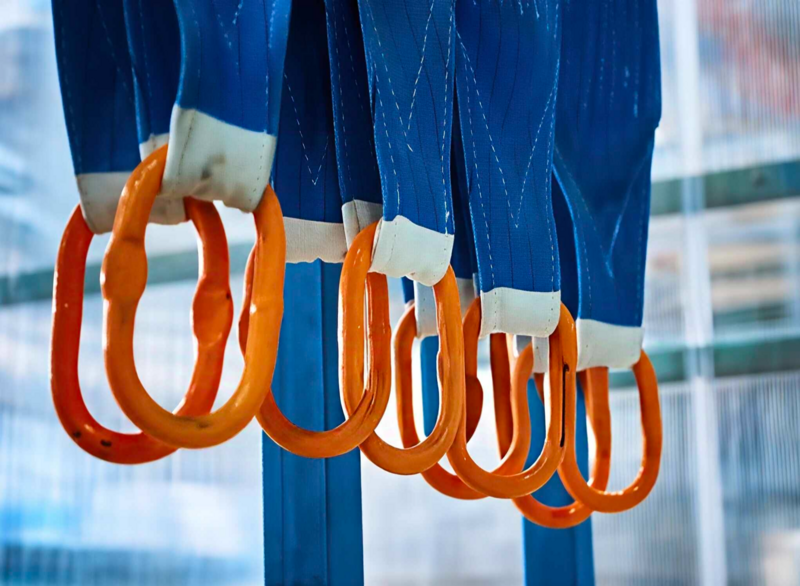
Comprensión de las hondas redondas
Hondas redondasson bucles continuos de fibras de poliéster de alta resistencia encerradas en una manga tubular duradera. Su diseño circular los hace increíblemente versátiles, ideales para el levantamiento de servicio pesado en industrias como la construcción, la logística y la fabricación.
Flexibilidad superior:Se ajusta a cargas irregulares o cilíndricas, reduciendo los riesgos de deslizamiento.
Distribución de carga mejorada: distribuye el peso de manera uniforme, minimizando el estrés en los puntos de carga.
Capacidad de carga alta: admite hasta 100,000 lbs (45,359 kg) en configuraciones verticales, con límites de carga de trabajo (WLL) que van desde 2,600 lbs (1,180 kg) a 90,000 lbs (40,823 kg) dependiendo del tamaño y el tipo de ganaderos.
Durabilidad:La manga protectora resiste la abrasión, el daño UV y los productos químicos, con una retención de resistencia a la tracción del 90% después de 1,000 horas de exposición a UV (probado por ASTM G154).
Versatilidad:Disponible en poliéster o nylon de alta tenacidad, con longitudes de 3 pies (0.9 m) a 30 pies (9 m).
En 2024, una empresa de construcción en Texas utilizó nuestras eslingas redondas de 10 toneladas (20,000 lb) para levantar vigas de concreto prefabricadas para un puente de carretera. La flexibilidad de las eslingas les permitió agarrar de manera segura las superficies irregulares de los vigas, reduciendo el tiempo de aparejo en un 20% en comparación con las eslingas de cadena. El gerente del proyecto señaló que "las eslingas de Force Rigging manejaron 50 elevaciones diarias sin una sola falla".

Comprensión de las hondas planas
Slings planasson correas de poliéster o nylon tejidas, diseñadas como bandas anchas y planas. Son perfectos para levantar cargas delicadas o de bordes afilados, ofreciendo una solución rentable para industrias como la energía aeroespacial, automotriz y renovable.
Protección de la superficie:La superficie ancha (1–12 pulgadas, o 25–305 mm) previene el daño a las cargas pulidas o frágiles.
Rentable:Hasta un 30% más barato que las eslingas redondas, con precios que comienzan en $ 5 por honda para modelos de 1 pulgada y 1 capas.
Diseño liviano:Una honda de 6 pies y 2 pulgadas de ancho pesa solo 1.2 lbs (0.54 kg), lo que facilita el manejar y almacenar.
Fuerza personalizable:Disponible en 1–4 diseños de capas, con WLL de 3,100 lbs (1,406 kg) a 30,000 lbs (13,608 kg).
Cumplimiento:Se encuentra con EN 1492-1, ASME B30.9, CE, GS y los estándares WSTDA para la confiabilidad global.
Un fabricante aeroespacial en California usó nuestras hondas de cintas planas de 2 pulgadas y 2 capas para levantar paneles de fuselaje de aluminio. La superficie ancha de las hondas evitó rasguños, asegurando cero defectos en 200 elevadores. Al combinar las eslingas con almohadillas de desgaste, manejaron los paneles de forma segura con bordes afilados, ahorrando $ 10,000 en posibles costos de retrabajo.
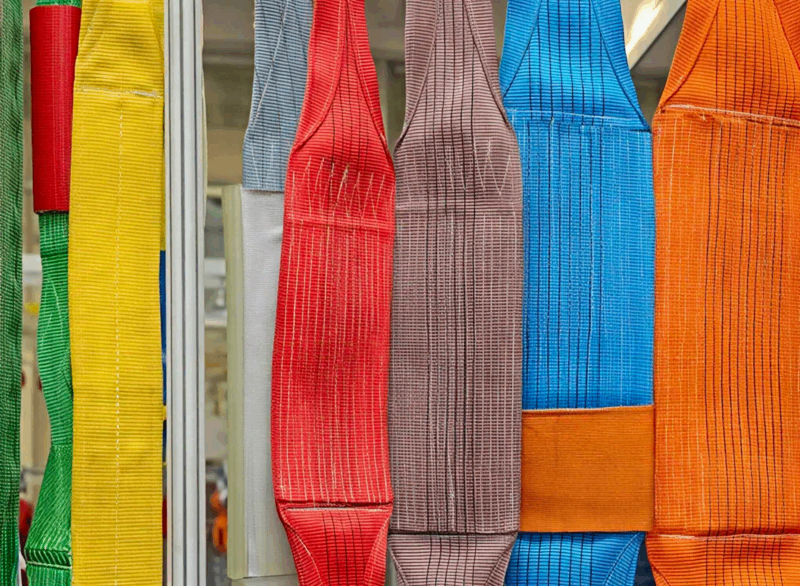
Cómo probamos la fuerza de las eslingas
En la fuerza de la fuerza, no solo reclamamos durabilidad, lo probamos. Nuestras hondas se someten a pruebas rigurosas en nuestro laboratorio certificado ISO 9001 en Ningbo, China:
Prueba de tracción:Cada lote de esling se prueba a 2 veces su WLL usando una máquina de prueba hidráulica de 100 toneladas. Por ejemplo, una eslinga redonda de 5 toneladas se tira a 10 toneladas (22,046 lbs) para verificar su factor de seguridad 7: 1.
Resistencia a la abrasión:Simulamos 1,000 ciclos de elevación en una plataforma de abrasión personalizada, asegurando que la manga protectora retiene el 95% de integridad (según los estándares WSTDA-T-1).
Prueba de campo:En 2023, nos asociamos con una empresa de logística para probar 50 hondas redondas en un entorno de puerto. Después de 6 meses de uso diario, el 98% de las eslingas no mostró desgaste visible, validado por inspectores externos.
Estas pruebas se alinean con los estándares CE, GS, ISO 9001 y WSTDA, lo que le brinda confianza en el rendimiento de nuestros hondas.
Diferencia principal: honda redonda vs. lingla plana
| Característica |
Honda redonda |
Sling de cintas planas |
| Diseño |
Bucle continuo |
Correa plana y tejida |
| Capacidad de carga (WLL) |
Hasta 100, 000 lbs (45, 359 kg) |
Hasta 30, 000 lbs (13, 608 kg) |
| Distribución de carga |
Superior, se adapta a la forma de carga |
Bueno, menos adaptable |
| Protección de la superficie |
Moderado |
Excelente para superficies delicadas |
| Costo |
$ 10– $ 200, dependiendo de la capacidad |
$ 5– $ 50, económico |
| Peso |
2–20 lbs (0.9–9 kg) para una longitud de 6 pies |
0.5–5 lbs (0.23–2.27 kg) para una longitud de 6 pies |
Las eslingas redondas sobresalen para cargas pesadas e irregulares que requieren flexibilidad, mientras que las hondas planas son ideales para superficies delicadas o proyectos conscientes del presupuesto.

Cuándo elegir cada honda
Cuándo elegir una honda redonda
Cargas pesadas:Perfecto para levantar maquinaria de hasta 50 toneladas, como turbinas o vigas de acero.
Necesidades de flexibilidad:Se adapta a las cargas cilíndricas (por ejemplo, tuberías) o formas irregulares, reduciendo el tiempo de aparejo hasta un 25%.
Puntos de anclaje:Use en la configuración de los ojos o los ojos de azotes para la restricción de carga segura durante el transporte.
Entornos duros:Resiste los productos químicos y la exposición a los rayos UV, ideales para la construcción al aire libre.
Cuándo elegir una honda plana
Superficies delicadas:Protege superficies pulidas, como paneles de vidrio o componentes aeroespaciales.
Bordes afilados:Combina con almohadillas de desgaste (0.25 pulgadas de grosor, recubiertas de poliuretano) para un levantamiento seguro.
Restricciones presupuestarias:Ahorra 20-30% en comparación con las eslingas redondas para cargas menores de 10 toneladas.
Facilidad de uso:El diseño liviano simplifica el aparejo de pequeñas tripulaciones.
Aplicaciones prácticas y técnicas de aparejo
Usando eslings redondas
Restricción de carga:Configurar como puntos de anclaje con configuraciones de ojos para aplicaciones de camiones. Por ejemplo, una honda de 5 toneladas asegura 10,000 libras en el modo de enganche de canasta.
Hitches:Use la canasta (2x wll), gargantilla (0.8x wll) o enganche vertical para una estabilidad óptima.
Cargas máximas:Nunca exceda WLL (por ejemplo, 5,000 libras para una eslinga de 2 pulgadas y 5 toneladas en enganche vertical).
Uso de una esling de cinta planas
Protección de borde:Agregue almohadillas de desgaste de 0.25 pulgadas para cargas afiladas, extendiendo la vida útil de la eslinga en un 50%.
Aparejo:Evite las eslingas de torcedura, lo que reduce la resistencia hasta en un 20%. Use canasta o enganche de gargantilla para cargas menores de 10 toneladas.
¿Por qué elegir el aparejo de fuerza?
Como miembro de la WSTDA desde 2024 y un fabricante certificado por ISO 9001, Force Rigging ofrece eslingas diseñadas para durabilidad, cumplimiento y rendimiento. Nuestra instalación de Ningbo produce 10,000 eslingas mensualmente, con una tasa sin defectos del 99.8% verificada por las auditorías SGS. Ofrecemos recomendaciones personalizadas, ya sea que esté levantando maquinaria pesada o componentes delicados. Nuestros recursos de capacitación y guías de inspección mantienen sus operaciones compatibles y eficientes.
Póngase en contacto con Joe, nuestro ingeniero de aparejos senior, en joe@forcerigging.com o +86 180 6735 5227para orientación personalizada. Visite Forcerigging.com para explorar nuestra gama completa de soluciones de elevación.






